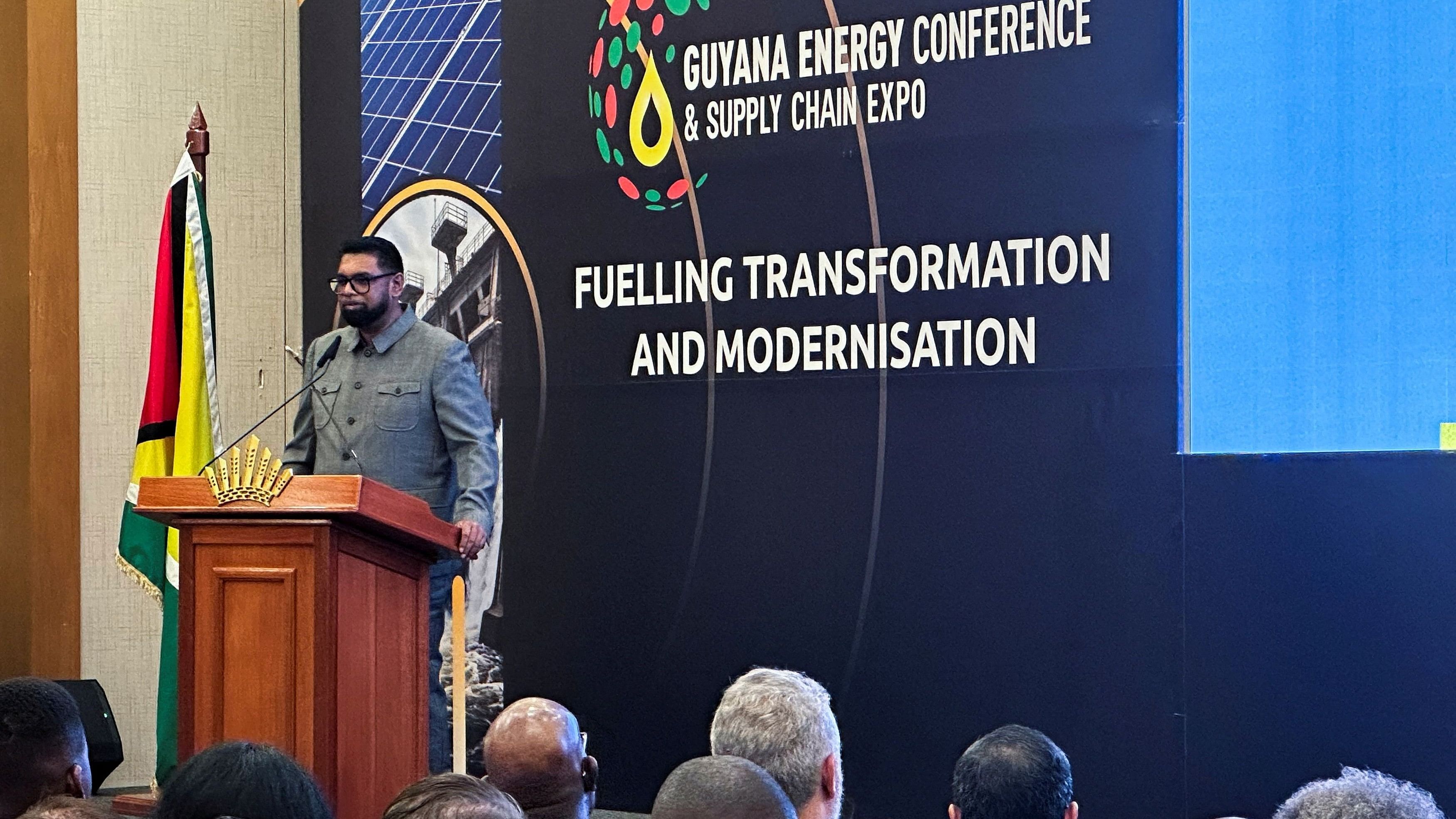
Guyana's President Mohamed Irfaan Ali speaks at Guyana's Energy Conference and Exhibition in Georgetown, Guyana
Credit: Reuters Photo
In a recent video clip that went viral, Guyana’s President Irfaan Ali cuts short an interviewer who asks him how the recent discovery of new oil reserves would impact the country’s climate. The discovery holds a promise of prosperity for the Caribbean nation. Ali speaks about how Guyana has preserved its forests, which he claims store 19.5 gigatons of carbon. He effectively says he will not take lectures on climate change from developed nations. Guyana is undergoing an energy boom, with 11 billion barrels of oil-equivalent resources discovered so far off its coastline. A country which had more than 40% of its population below the poverty line, Guyana is today one of the fastest-growing economies in the world, especially since commercial drilling began in 2019. It could become one of the largest per-capita oil producers within a few years.
India has had historical ties with Guyana, as nearly 40% of the population is of Indian and South Asian origin. These are descendants of Indians forced into indentured labour by the British colonisers. Hinduism is the nation’s second-largest religion. Guyana’s abundance of oil and gas resources presents a unique opportunity for India. Ali has given the impression that he will not suffer condescending Westerners or any entitlement North America or Europe may have over Guyana’s resources. Meanwhile, Prime Minister Narendra Modi has positioned himself as a leader of the ‘Global South’, striving to improve ties with countries with large expatriate populations. Most of the exploration and extraction is being done by Western behemoths like ExxonMobil, Halliburton, BP, and Royal Dutch Shell. However, in January, India and Guyana signed a five-year memorandum of understanding for Indian companies such as ONGC Videsh to participate in the exploration, production, and refining of crude in Guyana. Last week, the Guyana Defence Forces took delivery of two Dornier Do-228 aircraft built by Hindustan Aeronautics Ltd, as part of a ‘line-of-credit’ deal.
India needs to do more for Guyana, while benefiting from its rich hydrocarbon resources, as it looks to meet its ever-growing consumption, now at 4.4 million barrels a day. When it comes to extracting natural resources of other countries, India is unlikely to be as ‘predatory’ as some of the Western nations. India can, and should, help Guyana ramp up its health, education and transportation infrastructure, train its military, and provide financial assistance to further cement bilateral ties. This will help Georgetown and New Delhi to move closer and become ‘partners in progress’. Deep cultural and historical ties exist. It is time to build hereon.